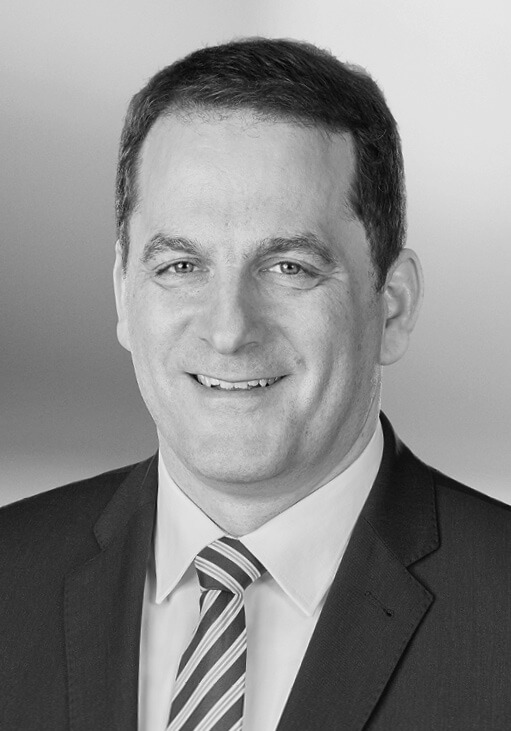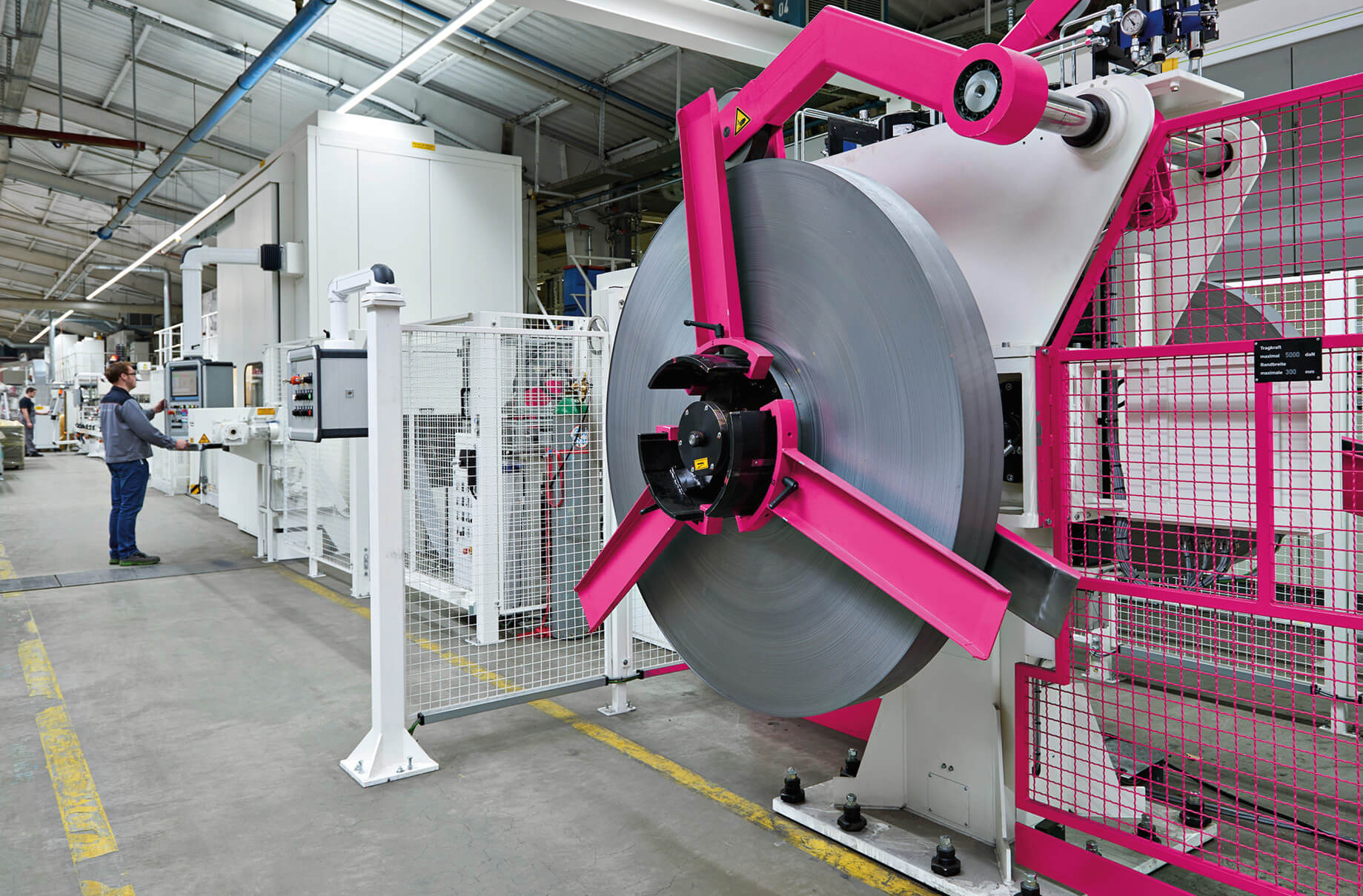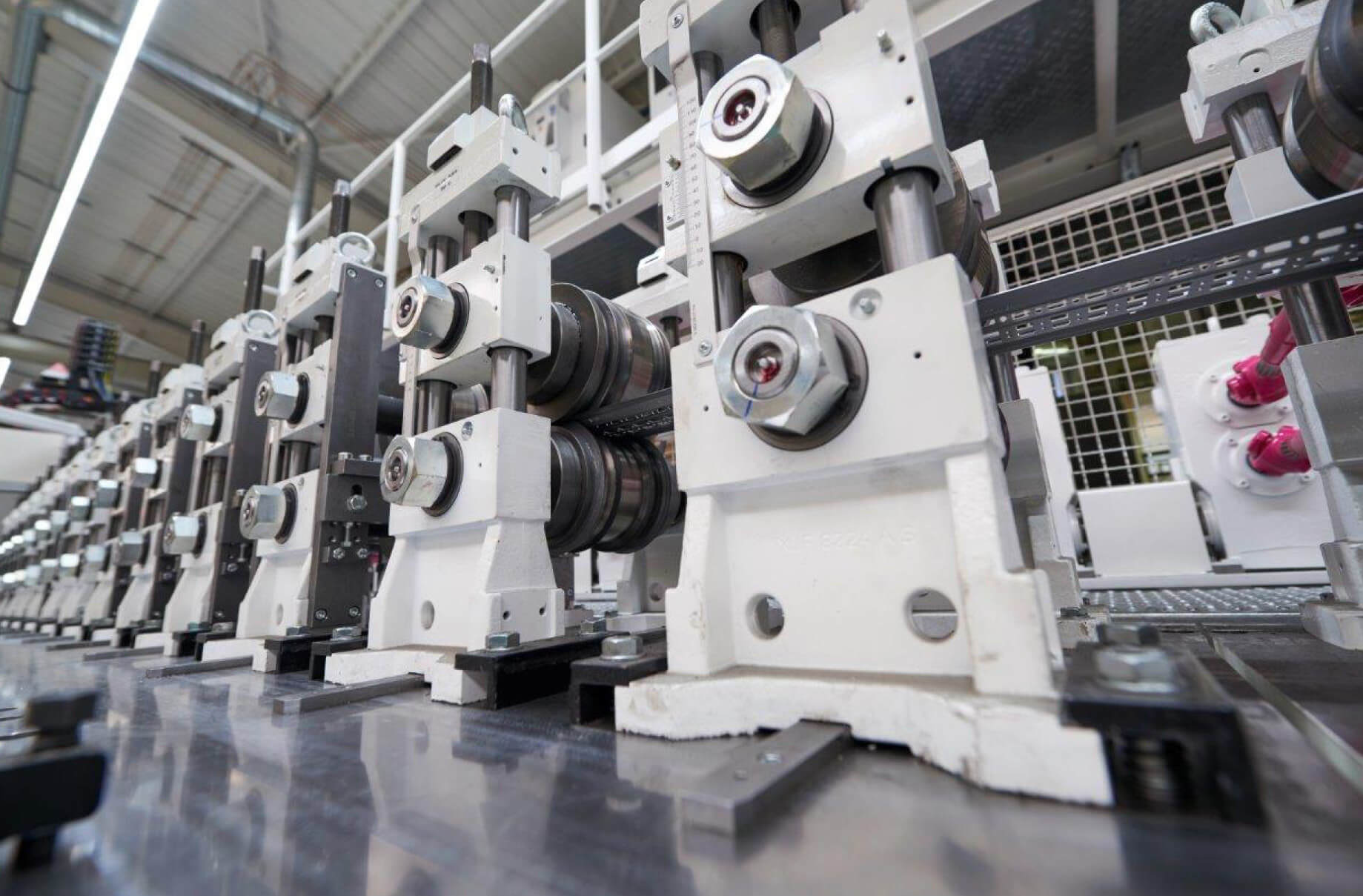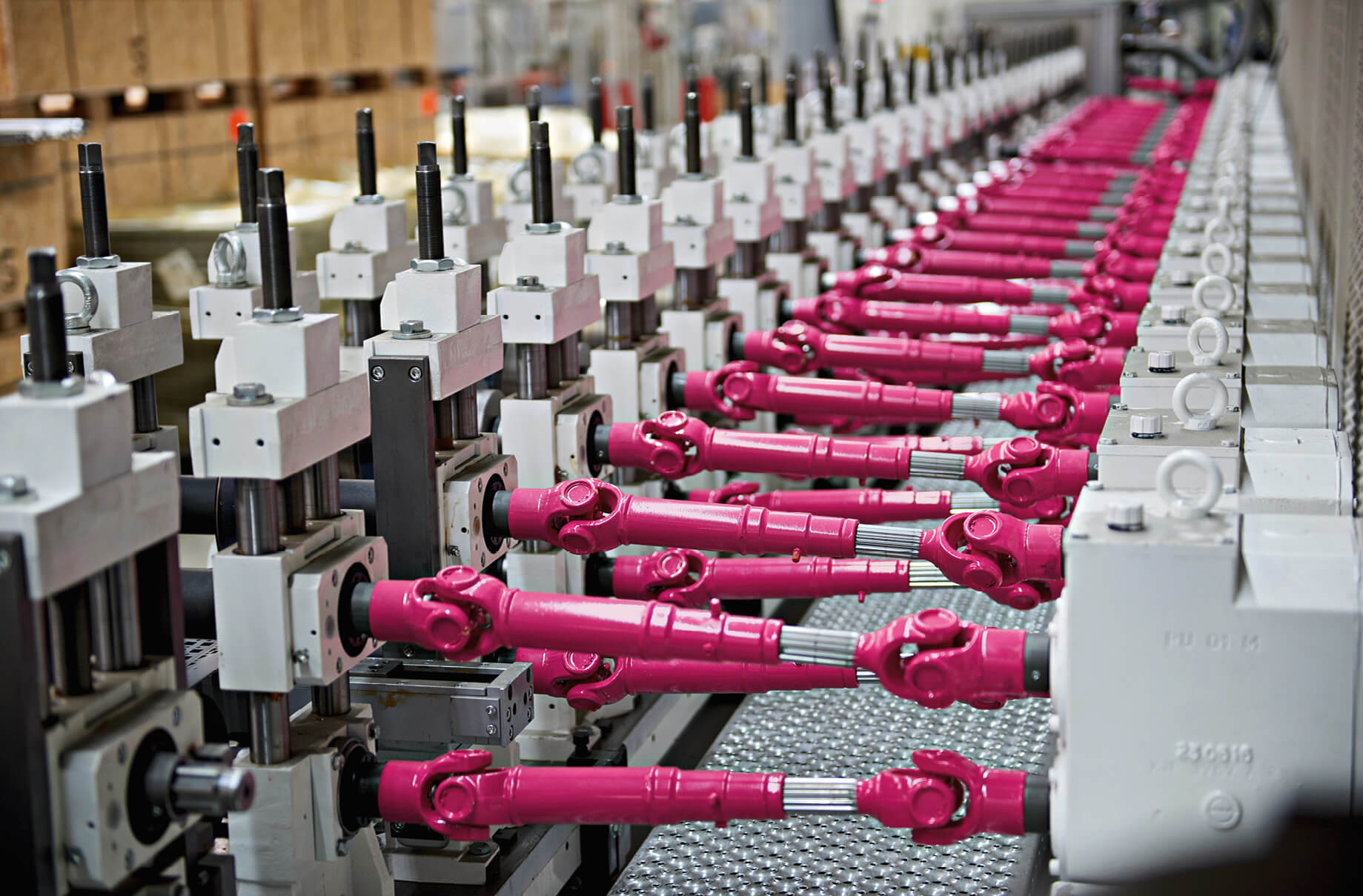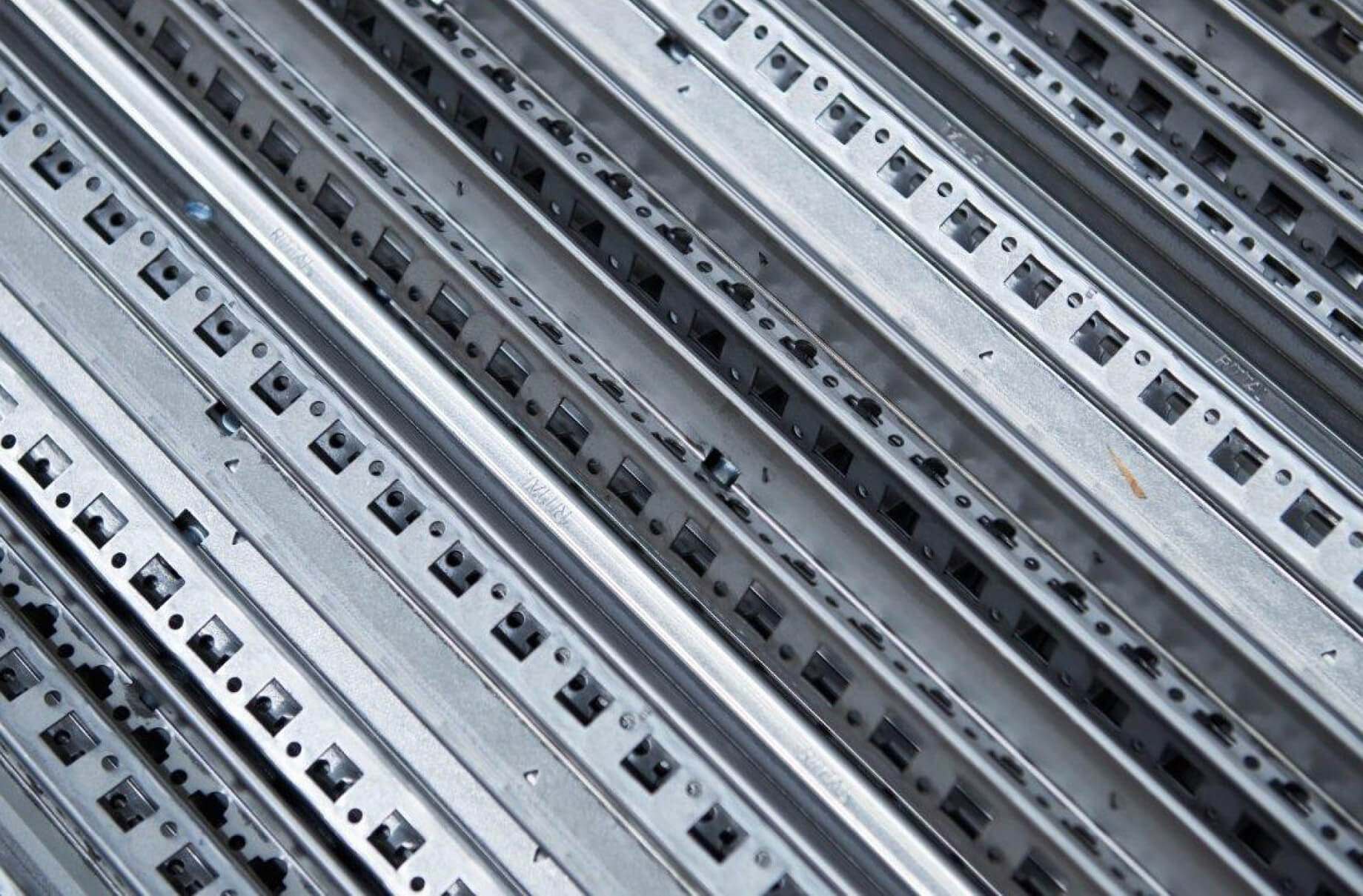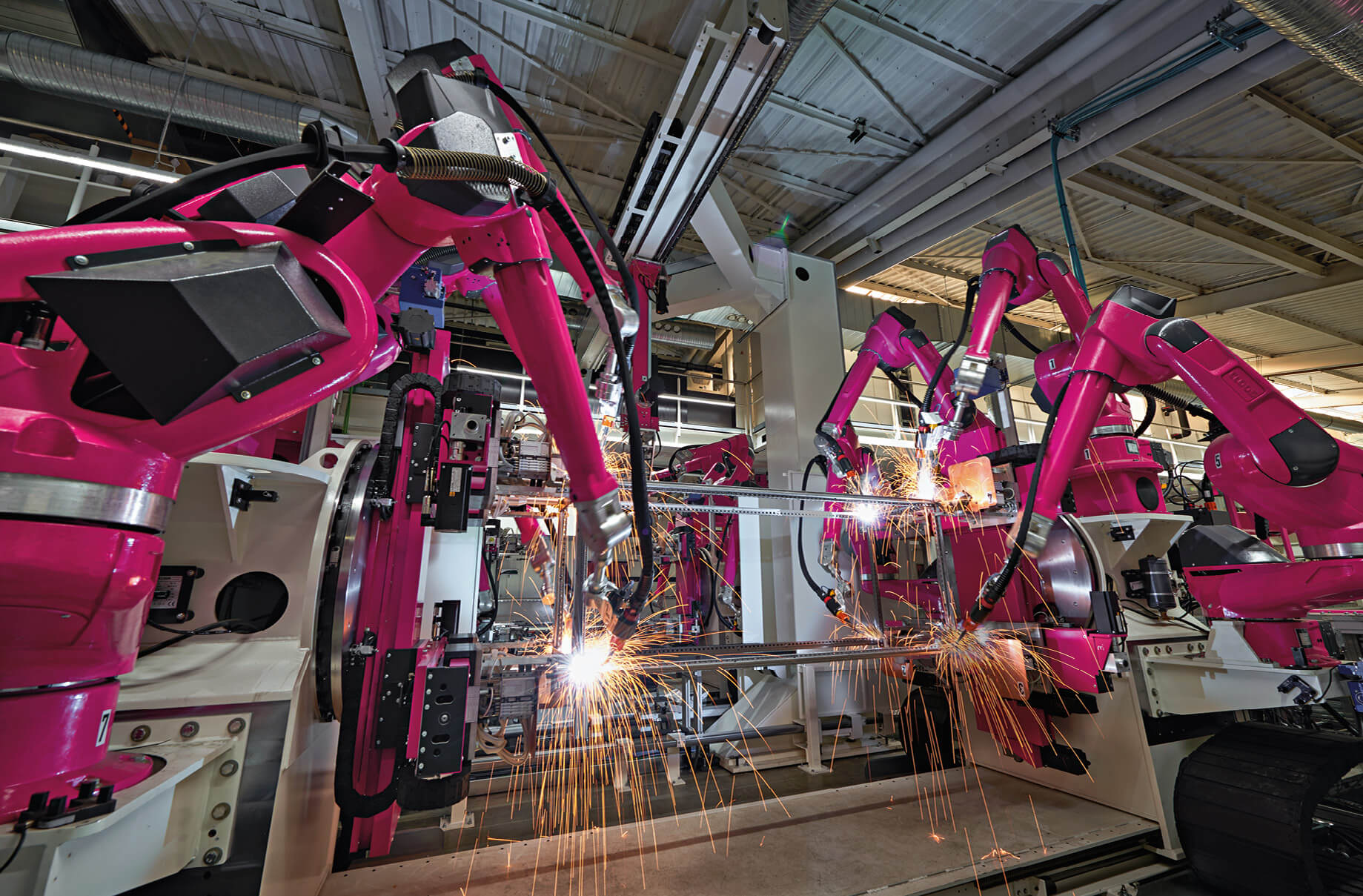Putting Industry 4.0 into practice
In the Rittershausen manufacturing facility, he has now arrived at the point where the old and new systems meet. Two profiling systems stretch out before him – on the left, the old one, and on the right, the new system in power pink. “In principle, the new system works in a similar way to the old one,” explains Röttchen. It, too, punches, rolls, bends and creates robust profiles with millimetre precision from the vast coil of sheet steel for Rittal enclosure frames. Yet, just like the VX25, the new production facilities have also been refined. Hundreds of sensors monitor the manufacturing process. For example, the new flexibility means that rivets are added automatically to the frame section, which is then cut to length and prepared for welding. “And with the sensors, we’re systematically implementing our vision of Industry 4.0 and making our quality control even more efficient.”
When the redevelopment is complete, the entire factory will operate according to Industry 4.0 principles. “We want to introduce a fully automated, fully networked production system here,” says Peter. An ever-increasing number of processes will then run fully automatically and with continuous monitoring – from the customer order all the way to the finished product. The software in the warehouse detects what parts need to be reordered. Thousands of sensors monitor each production step. “As a result, we can eliminate errors and work even faster,” adds Peter.
Europe in 24 hours
Hypernetworking is the logical response to the growing complexity in production. Rittal will shortly be offering a 24-hour delivery service throughout Europe. To keep this promise, each production step in the highly complex value chain needs to be just right. The vision is clear: “If a customer in Italy orders ten VX25 units, our manufacturing execution system here in Rittershausen is notified directly and fully automatically and then starts production autonomously,” says Röttchen.
The networked and intelligent machines automatically know when they require maintenance and send appropriate signals. This works because an artificial intelligence system in the background continuously evaluates data from the sensors, thus optimising both production and maintenance.
The employees at the Rittershausen plant are the key support for this change. They continually learn how the new systems work and how they can be controlled. The relevant further training sessions are booked solid for weeks ahead. More than 250 people have registered already, says Peter. “Anyone wishing to do further training with us enjoys the best conditions,” he explains.
For customers, the Rittershausen transformation project offers two-fold benefits – the optimised product and the innovations in production. Tracking where exactly a VX25 order is in production at any given moment will soon be as normal for them as the enclosure’s tailor-made quality. “We’re committed to driving forward innovation for our customers,” says Röttchen, adding: “and we do not stop at anything to achieve this goal.”
